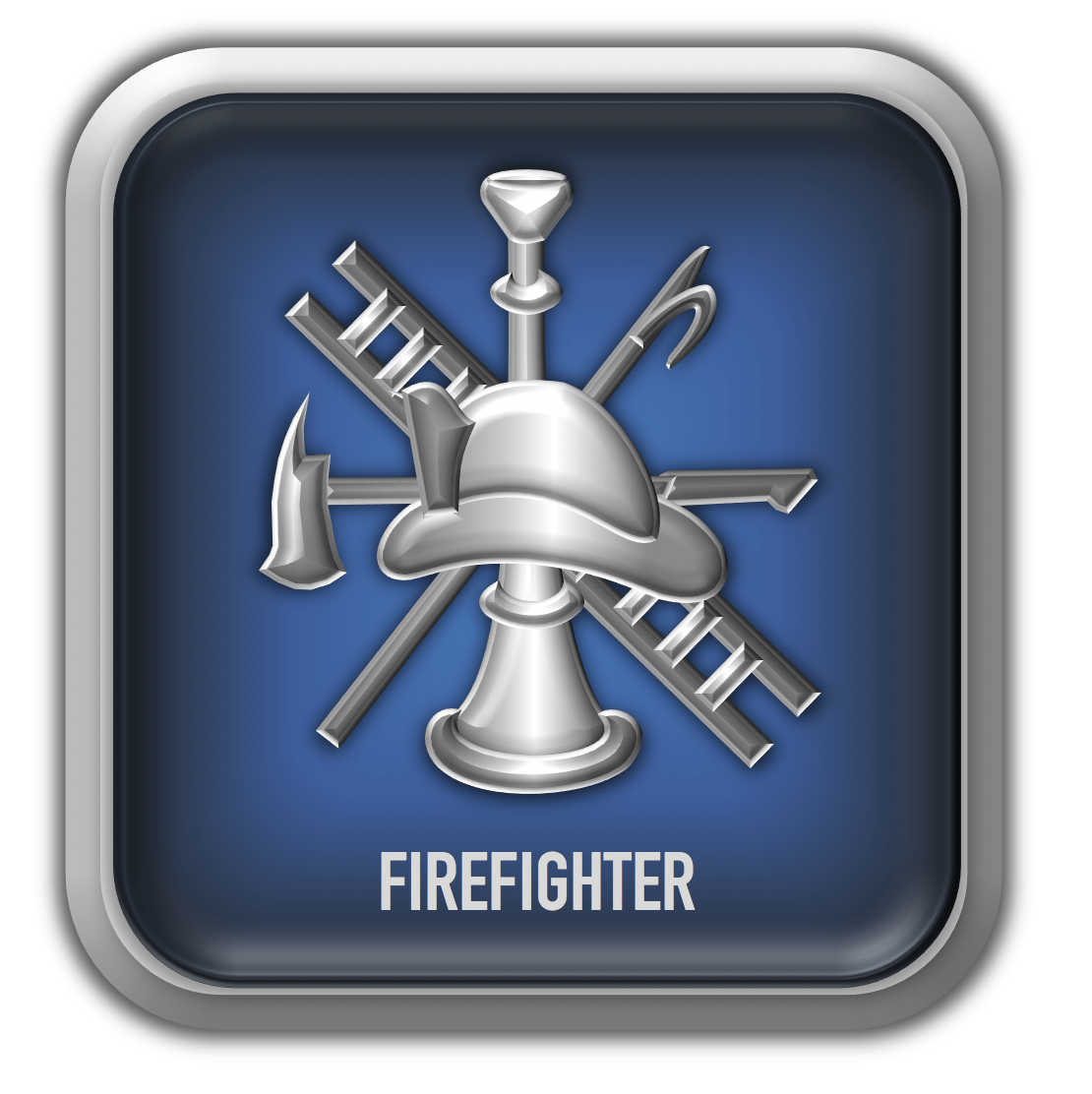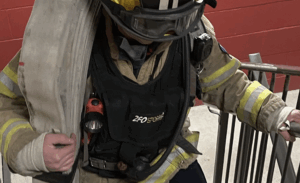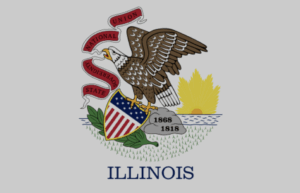The origins of the fire service harken back to a paramilitary structure, a unique approach that draws parallels to military organizations in terms of organization, operation, firefighter rank, and insignia.
This framework instills discipline and precision into firefighting efforts, essential for effectively managing crises.
While firefighter rank and insignia exhibit similarities to military structures, it’s imperative to recognize that titles and responsibilities may significantly differ.
Table of Contents
The First Firefighter Rank and Insignia
At the outset, a firefighter occupies the lowest rung within the fire service’s chain of command. This entry-level position serves as the foundation upon which careers in the department are built.
Novice firefighters remain at this rank until they satisfy the department’s years-of-service requirement for advancement, which is often set at around five years.
This period allows them to garner experience and expertise, ensuring they are well-prepared to take on more substantial roles.
Titles
The ranks carry consistent titles across various fire departments, offering a degree of uniformity. However, it’s essential to comprehend that the responsibilities and roles affiliated with these titles may differ substantially from one department to another.
This divergence can lead to unique challenges and expectations for firefighters. For example, a Lieutenant in one department may shoulder responsibilities equivalent to those of a Captain in another.
Certain departments amalgamate and consolidate ranks to accommodate these variations, streamlining their structure for clarity and efficiency.
Promoting
A demanding journey awaits for firefighters aiming to ascend the career ladder and achieve higher firefighter ranks and insignia. Progression in the ranks commonly depends on successfully navigating a rigorous promotional exam.
These exams commonly encompass a multifaceted evaluation process, including a written test to assess knowledge, a simulated exam to gauge practical skills, and an interview to evaluate leadership capabilities.
In essence, the paramilitary roots of the fire service provide a robust framework that fosters accountability, coordination, and efficient emergency response. While titles may remain consistent, the system’s adaptability ensures that firefighters can effectively safeguard their communities, regardless of the nuanced responsibilities attached to their ranks.
If you have wondered what it would be like to be a firefighter read my blog titled Career Firefighter: Is it for you?
Firefighter
The journey of a firefighter is marked by a transition from the probationary phase to becoming a sworn firefighter, with each stage playing a crucial role in the development of these brave men and women dedicated to community safety.
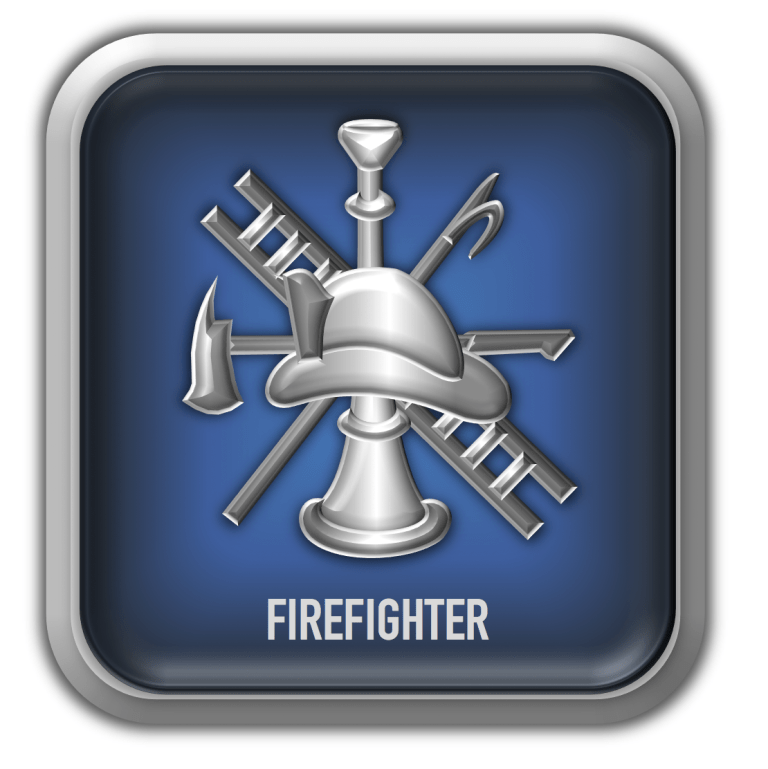
Firefighter Rank and Insignia
Firefighter
Probationary Firefighter
Transition and Learning:
Newly graduated firefighters embark on a 1–3-year probationary period, transitioning from fire recruits to essential team members. This period marks the shift from initial training to practical experience within the fire service.
Operations Expertise:
During this phase, probationary firefighters become proficient in internal station operations, such as equipment maintenance and station upkeep, and external fire ground operations, where they apply their training to real emergencies.
Protocol Familiarization:
They familiarize themselves with department-specific protocols, whether Standard Operating Procedures (SOPs) or General Operating Procedures (GOPs), guiding actions during various incidents.
Versatile Exposure:
Probationary firefighters may rotate among fire stations as float or pool firefighters, gaining exposure to diverse teams and equipment.
Maintenance and Service:
Learning to maintain fire stations and rigs is essential, ensuring that equipment is always ready for immediate response.
Communication Skills:
Developing essential communication and interpersonal skills allows them to engage effectively with the public and colleagues.
Real-World Responses:
Engaging in real fire and emergency medical service (EMS) responses, they apply their training to actual incidents, gaining invaluable experience.
Structured Advancement:
Progressing through a structured journeyman program includes further education, written exams, and physical tests, allowing them to advance in their career.
This probationary period is a foundational step, allowing firefighters to consolidate their training and gain practical experience while contributing to their communities’ safety and well-being.
Sworn Firefighter
Sworn firefighters are committed to lifelong learning, ensuring they remain current with evolving firefighting techniques and protocols.
Station Selection:
They can bid for positions at fire stations that align with their preferences and career aspirations, working in environments that suit their strengths and interests.
Mentoring and Leadership:
Drawing from their experience, sworn firefighters play a pivotal role in mentoring probationary firefighters, facilitating their smooth transition into the fire department and contributing to their growth.
Community Engagement:
Active involvement within the local community goes beyond emergency responses, fostering trust and building awareness.
Union Advocacy:
Many join the local union, advocating for their rights and contributing to collective bargaining efforts.
Career Exploration:
Sworn firefighters often explore various opportunities and career choices within the fire service. This may include specializing in specific areas, pursuing leadership roles, or diversifying their skill set to meet evolving demands.
As sworn firefighters, they embrace experience and responsibility, contributing to the welfare of their fellow firefighters and the community they serve while continuing to evolve in their firefighting careers.
From the foundational steps of a probationary firefighter to the seasoned expertise of a sworn firefighter, the journey encompasses growth, dedication, and a commitment to public safety.
If you want more details about the hiring requirements, read Firefighter Hiring Requirements and Preferences Explained.
Learn How To Become A Career Firefighter and Make $100K a Year

Mastering the Firefighter Exam is a complete guide on how to pass the firefighter exam with a top score. It simplifies the complicated hiring practices of big city fire departments and reveals insider information most candidates don’t know about.
If You Would Like To Know How To Get Ahead of Your Competition, This Book Is For You.
Driver
This role may be referred to as a Fire Equipment Operator (FEO) or Engineer in many fire departments, though it goes by various titles. The driver in this position holds a critical responsibility, primarily overseeing the fire apparatus they are assigned to. This apparatus can range from fire engines and ladder trucks to rescue squads, ambulances, or even fire boats.
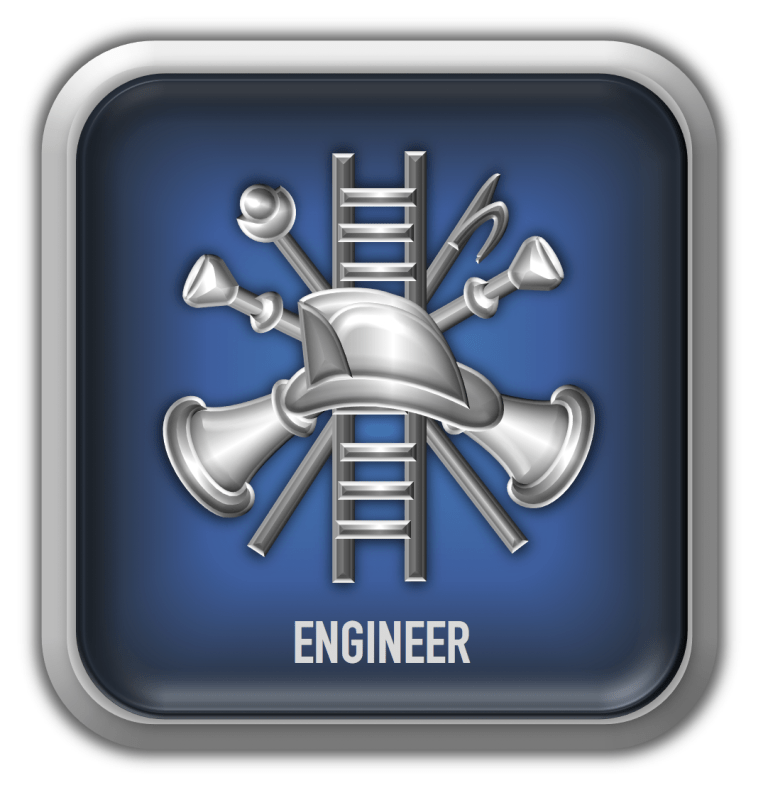
Firefighter Rank and Insignia
FEO
Driver, Engineer, Also Known As Fire Equipment Operators (FEOs)
A driver’s key duties include not only managing the fire apparatus but also operating all the equipment associated with it. This encompasses a wide array of tasks, including:
1. Operating Fire Pumps:
Drivers are responsible for operating fire pumps and ensuring efficient water flow for firefighting purposes. This is a crucial aspect of fire suppression.
2. Aerial Ladders:
Drivers operate aerial ladders for ladder trucks, allowing access to elevated areas during rescues and firefighting.
3. Generators:
Many fire apparatus are equipped with generators to power various tools and equipment. Drivers maintain and operate these generators.
4. Power Tools:
Operating various power tools, such as hydraulic rescue tools, saws, and extrication equipment, is part of the driver’s role, particularly during rescue operations.
In summary, the driver, known as a Fire Equipment Operator or Engineer, plays a vital role in effectively functioning fire apparatus and related equipment. Their responsibilities encompass driving and proficiently operating a range of tools and systems critical to firefighting and rescue efforts.
Lieutenant or Captain
The ranks of Lieutenant and Captain within a fire department carry distinct responsibilities focused on effective leadership and tactical management.
Responsibility for Company Management:
Both Lieutenants and Captains hold crucial roles in managing individual companies within the department. These companies could be specialized units like an Engine or a Ladder company.
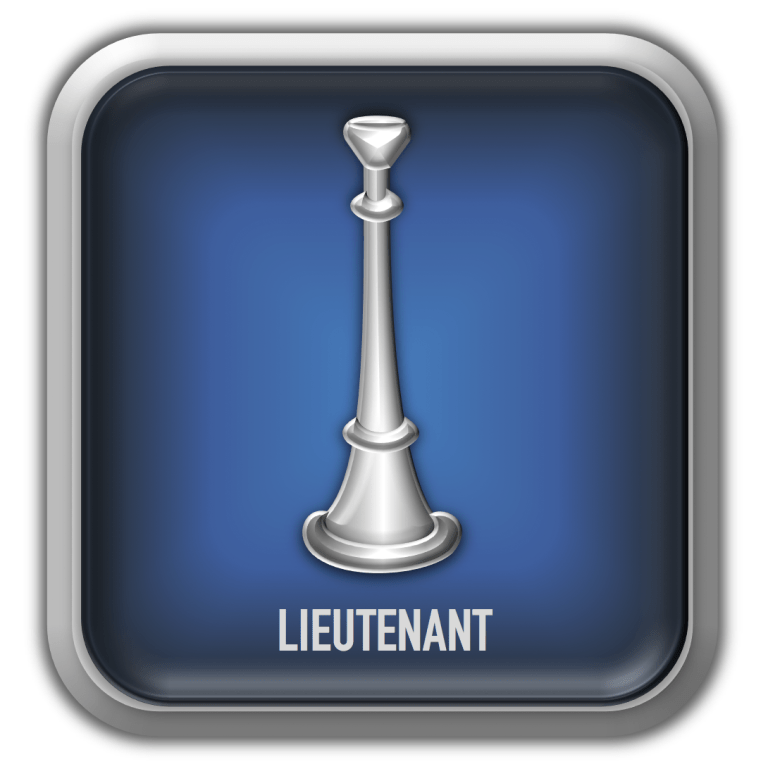
Firefighter Rank and Insignia
Lieutenant
1 Silver Bugel
Tactical Leadership:
One of their primary duties is to lead and execute tactical objectives at emergency scenes. This involves making critical decisions and coordinating firefighting efforts to achieve mission success.
Personnel Management:
Lieutenants and Captains also oversee the personnel within a fire station. They ensure team members are well-prepared and equipped to respond effectively to emergencies.
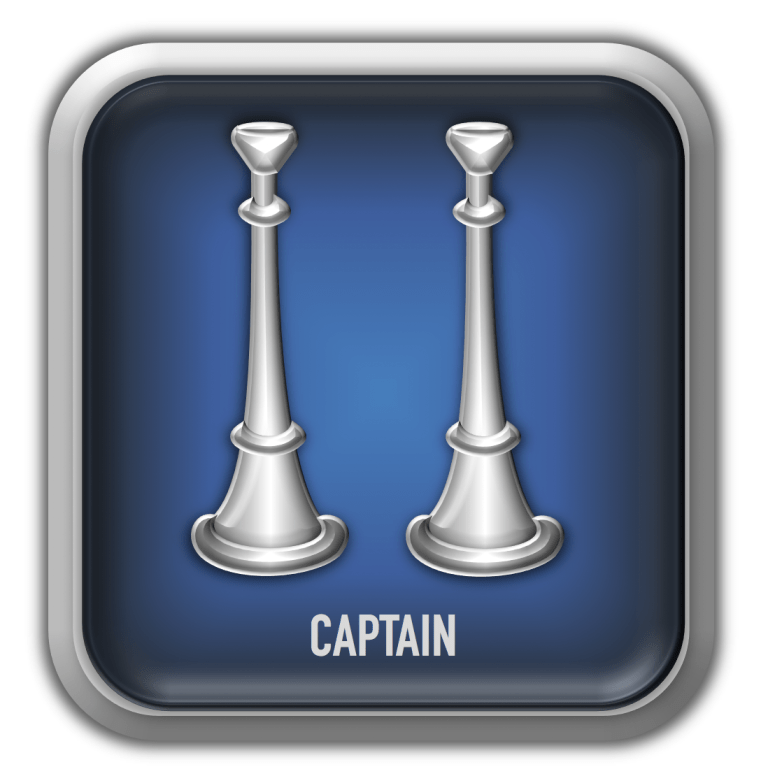
Firefighter Rank and Insignia
Fire Captain
2 Silver Bugel’s
In larger fire departments, the responsibilities may differ slightly. Lieutenants are typically responsible for managing one individual company, while Captains take on a broader role, overseeing all the companies within a fire station.
This means that Captains coordinate the efforts of multiple units and teams, ensuring seamless operations.
In essence, Lieutenants and Captains play pivotal roles in fire company management, guiding tactical responses during emergencies and maintaining the readiness and effectiveness of their teams within fire stations.
Battalion Chief or District Chief
These high-ranking officers serve as operational supervisors, critical in overseeing multiple fire stations located within a specific geographical area known as a district or battalion.
Strategic Leadership:
At the heart of their duties is operating at the strategic level during emergency scenes. While Lieutenants and Captains focus on tactical details, Battalion Chiefs and District Chiefs step back to take a broader view, formulating strategic plans, and coordinating actions to ensure that the entire emergency response is well-orchestrated.
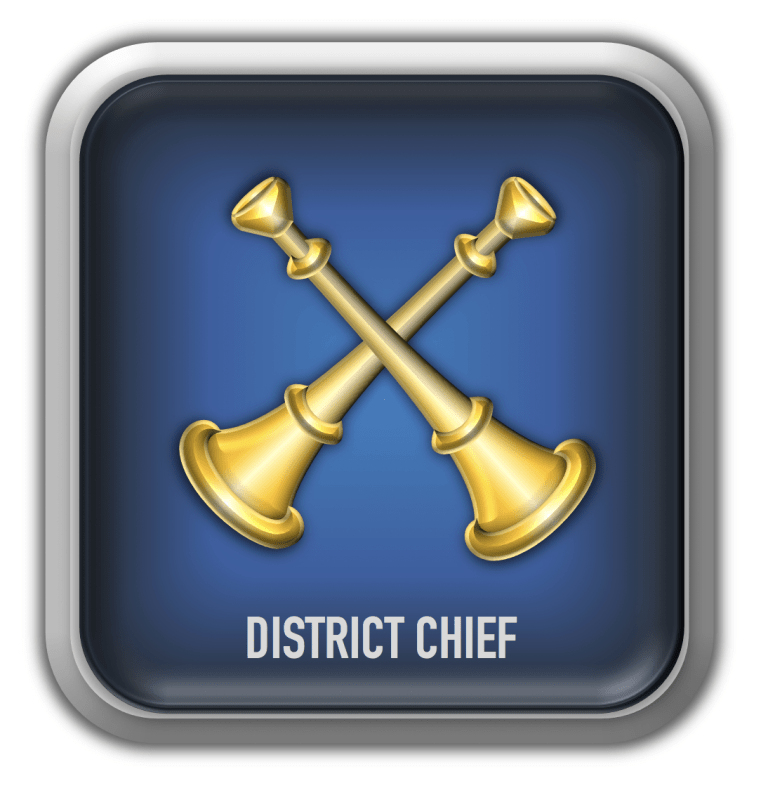
Firefighter Rank and Insignia
District Chief
2 Crossed Gold Bugel’s
Supervising Captains and Lieutenants:
These chiefs provide leadership and guidance to Captains and Lieutenants responsible for individual companies or units. The Battalion or District Chief ensures these lower-ranking officers align with the overall strategy and work effectively as a cohesive team.
Resource Management:
They are also tasked with managing resources efficiently. This includes deploying personnel and apparatus from multiple stations to the scenes of major incidents, ensuring that the right resources are allocated to handle the situation.

Firefighter Rank and Insignia
Battalion Chief
2 Crossed Gold Bugel’s
Incident Command:
In many cases, Battalion and District Chiefs may serve as the Incident Commander at significant incidents, responsible for overall command and coordination. This role involves making critical decisions and liaising with other agencies if necessary.
Community Engagement:
Beyond incident management, these chiefs often engage with the local community, addressing concerns, participating in public education, and building relationships that enhance community safety.
In essence, Battalion and District Chiefs are pivotal in the fire department’s operational leadership. They bridge the gap between tactical execution at the company level and the overall strategy of managing multiple stations and resources across a defined district or battalion.
Battalion Commander or Deputy Chief
The Battalion Commander or Deputy Chief typically holds the highest-ranking position during a 24-hour shift. This position ensures that the entire city or jurisdiction receives efficient and effective fire and emergency services.
Operational Staffing Oversight:
Their primary responsibility is overseeing the operational staffing of all the districts or battalions within the city. This involves managing the deployment of personnel, resources, and apparatus to ensure that every part of the city is adequately covered.
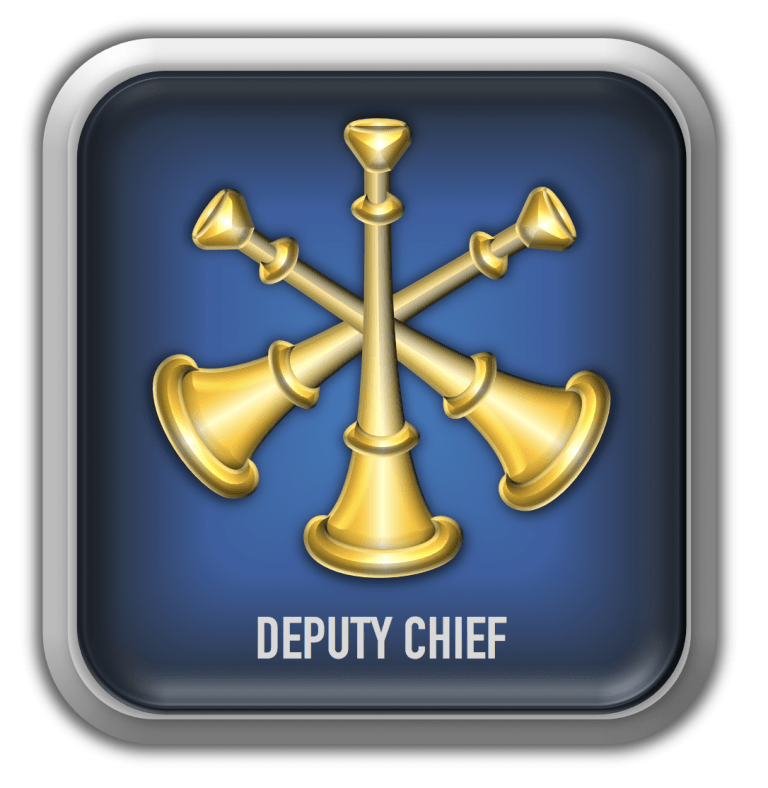
Firefighter Rank and Insignia
Deputy Chief
3 Crossed Gold Bugel’s
Incident Command and Emergencies:
In times of crisis, these senior officers are the ones to assume incident command. Their extensive experience and strategic insight are invaluable for coordinating complex and large-scale emergency responses. They are responsible for making high-stakes decisions, ensuring personnel safety, and managing resources effectively.
Supervision of District Chiefs and Battalion Commanders:
While District and Battalion Chiefs oversee the daily operations of specific areas, the Battalion Commander or Deputy Chief provides guidance and supervision to these high-ranking officers. They ensure that the leadership at the district and battalion levels is in alignment with departmental goals and protocols.
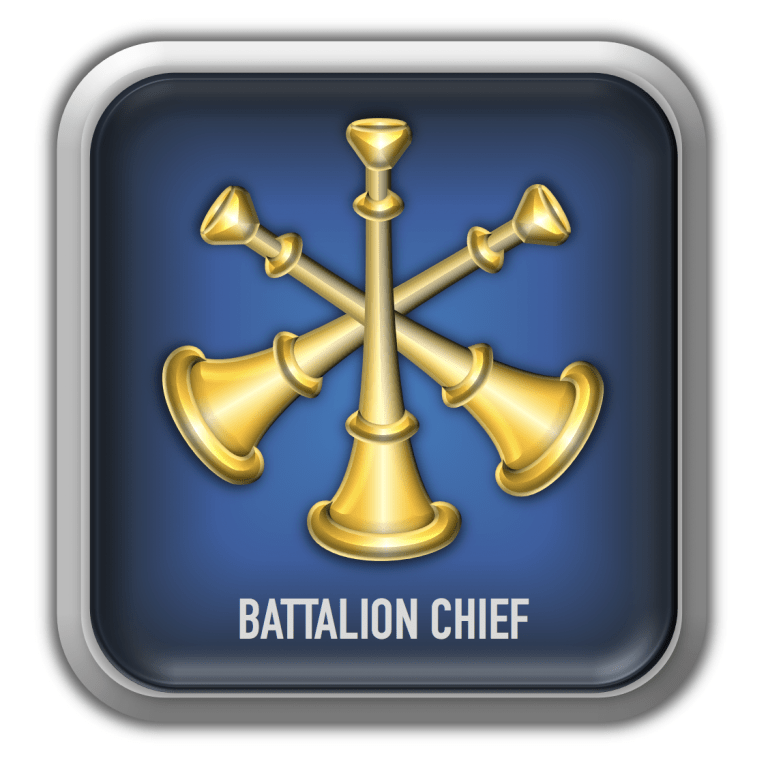
Firefighter Rank and Insignia
Battalion Commander
3 Crossed Gold Bugel’s
Senior Member of the Department:
Typically, this role is held by a seasoned firefighter with years of experience and a deep understanding of the department’s operations. Their expertise contributes significantly to the department’s ability to manage large-scale incidents and emergencies.
Resource Allocation:
These officers are responsible for resource allocation, which means they decide where and when to deploy additional personnel, equipment, and specialized units to address specific challenges or high-priority incidents.
In summary, the Battalion Commander or Deputy Chief serves as the linchpin of the department’s operational management during their shift.
They take on the highest authority and responsibility, overseeing multiple districts or battalions, assuming incident command during emergencies, and ensuring the department’s strategic objectives are met.
Assistant Chief
The Assistant Chief holds a pivotal executive role within the fire department, with overarching responsibilities that ensure the operational readiness of the services under their purview. Their position is central to the efficient functioning of the department.
Operational Division Management:
The Fire Chief may appoint one or more Assistant Chiefs to manage and control activities within specific operating divisions. These divisions often include suppression, emergency medical services (EMS), and special operations. Each division focuses on a critical aspect of firefighting and emergency response.
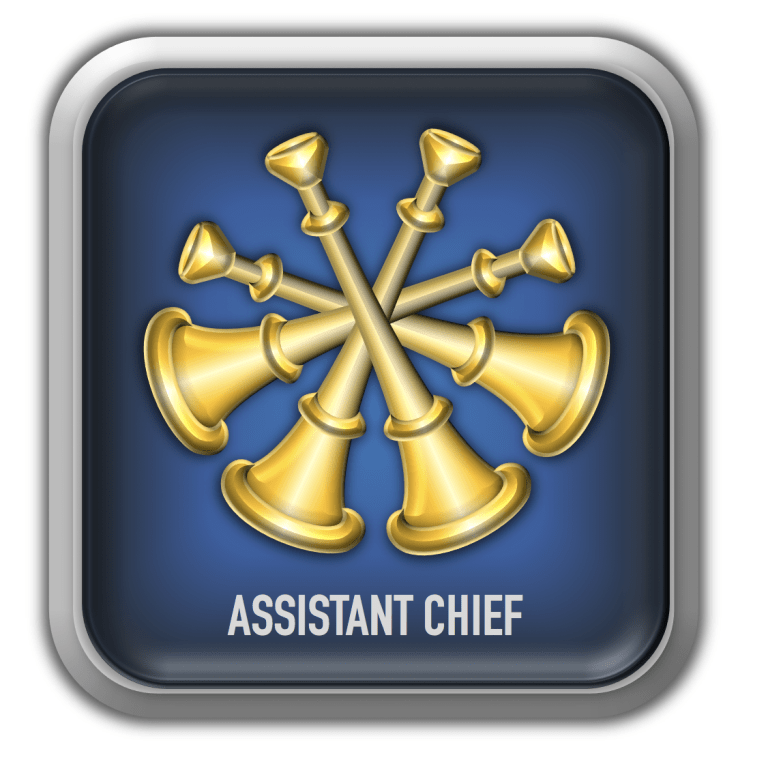
Firefighter Rank and Insignia
Assistant Chief
4 Crossed Gold Bugel’s
Supervision and Leadership:
Assistant Chiefs provide vital leadership within these divisions. They guide and oversee the work of District and Battalion Chiefs and other personnel under their jurisdiction. Their leadership ensures that firefighting and emergency response efforts are cohesive, well-coordinated, and meet established performance standards.
Strategic Planning:
A significant part of their role involves assisting the Fire Chief in strategic planning. They contribute to developing plans and strategies to address the department’s future needs, challenges, and growth. This includes anticipating changes in service demands, resource allocation, and improvements in response capabilities.
Budget Proposals:
Assistant Chiefs play an instrumental role in the department’s fiscal planning. They assist the Fire Chief in preparing budget proposals, ensuring that resources are allocated efficiently and effectively to support departmental goals.
Community and Stakeholder Engagement:
In addition to internal management, Assistant Chiefs often engage with the community and other stakeholders. They may participate in public education initiatives, address community concerns, and liaise with external organizations or agencies.
The Assistant Chief’s role is multifaceted, encompassing leadership, strategic planning, budget management, and the operational oversight of critical divisions. Their contributions are integral to the department’s ability to provide efficient and effective fire and emergency services while staying prepared for future challenges and growth.
The Fire Chief
As the highest-ranking officer within the fire department, the Fire Chief holds a position of paramount leadership and responsibility. Their role is integral to the effective and efficient functioning of the entire department.
Operational Readiness:
The Fire Chief is directly responsible for ensuring the operational readiness of all services the fire department provides. This encompasses many responsibilities, including firefighting, emergency medical services, hazardous materials response, etc. Their leadership is central to the department’s ability to respond promptly and effectively to various emergencies.
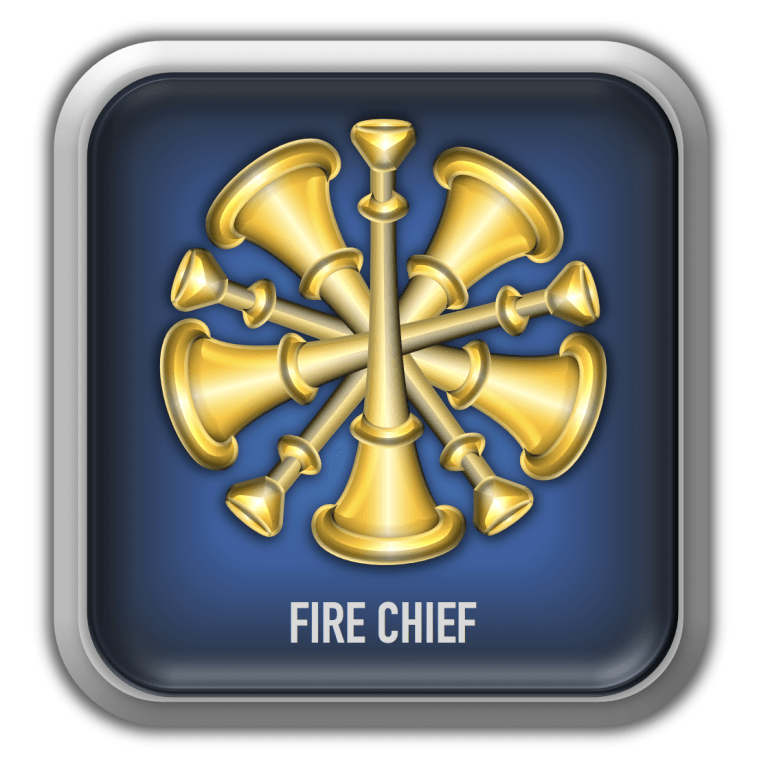
Firefighter Rank and Insignia
Fire Chief
5 Crossed Gold Bugel’s
Advocate for the Fire Service:
Beyond internal department management, the Fire Chief takes on a broader role as the fire service representative within the city or jurisdiction. They advocate for the interests and needs of the department in the political system. This advocacy is vital in securing the necessary support and resources to carry out department functions effectively.
Strategic Planning:
The Fire Chief plays a crucial role in strategic planning for the department. They are responsible for long-term vision and goal setting, anticipating future needs, and ensuring the department remains adaptable and prepared to address evolving challenges.
Budget Management:
A significant part of their role involves overseeing the department’s budget. This includes allocating resources, managing expenditures, and ensuring that financial resources are used efficiently to maintain operational readiness.
Community Engagement:
The Fire Chief often engages with the community, addressing concerns, participating in public education initiatives, and building trust between the department and the residents it serves.
Crisis Management:
During significant incidents or emergencies, the Fire Chief assumes the role of Incident Commander. This means they coordinate the response, make critical decisions, and manage resources to mitigate the incident’s impact.
In summary, the Fire Chief is the highest-ranking officer and the department’s visionary leader, advocate, and strategic planner. Their role encompasses internal and external responsibilities, all aimed at ensuring that the fire department is well-prepared, adequately supported, and responsive to the needs of its community.
If you want more details about the fire department hiring process, read The Fire Department Hiring Process: Unlocking Opportunities.
Become A Full-Time Paid Firefighter

Mastering the Firefighter Exam is a complete guide on how to pass the firefighter exam with a top score. It simplifies the complicated hiring practices of big city fire departments and reveals insider information most candidates don’t know about.
If You Would Like To Know How To Get A Head Of Your Competition, This Book Is For You.

